Last Updated: April 2022
One of the most fortunate things about my move to France, is that it’s given me the chance both to design myself a new office that’s outside of the house, and I’ve placed it in my gîte (outhouse) with a desk crafted to perfection by a friend from antique wood we found in a neighbour’s barn.
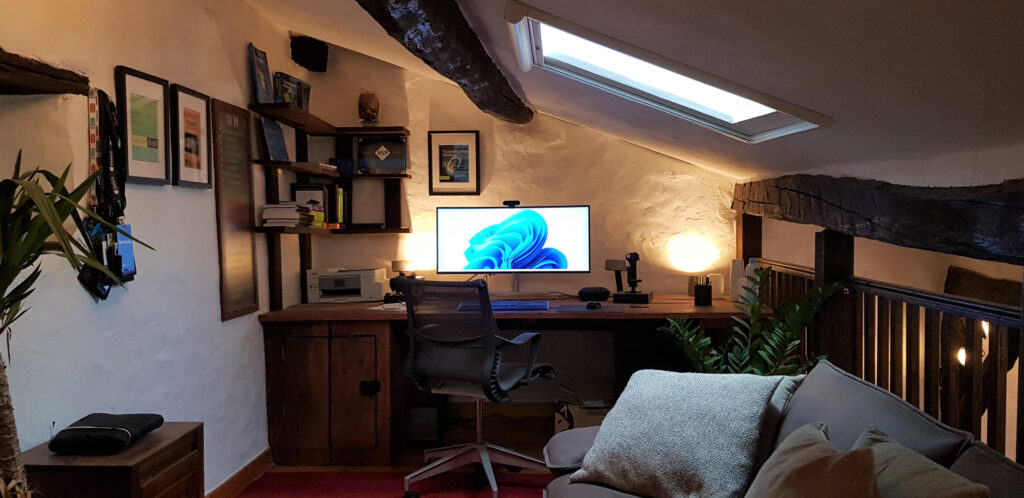
This has also given me the space to finally have the computer museum I always wanted. This is now finished (with space left for some new additions next year). I thought I would share some photos. These are all computers that I have used throughout my life, with a few extras that have a nostalgic effect on me.
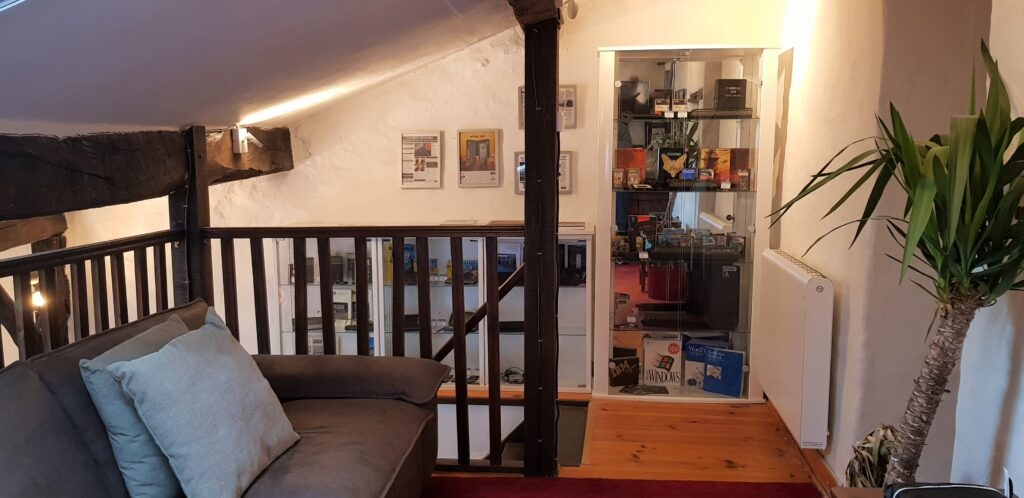
The main part of the computer museum is on the gîte mezzanine and includes several cabinets devoted to PDAs (Portable Digital Assistants) which are by far my favourite computer form-factor.

For each computer in the museum I have created label tags detailing the processor speed, memory and storage capacity, display resolution, and what operating system the computer ran on.
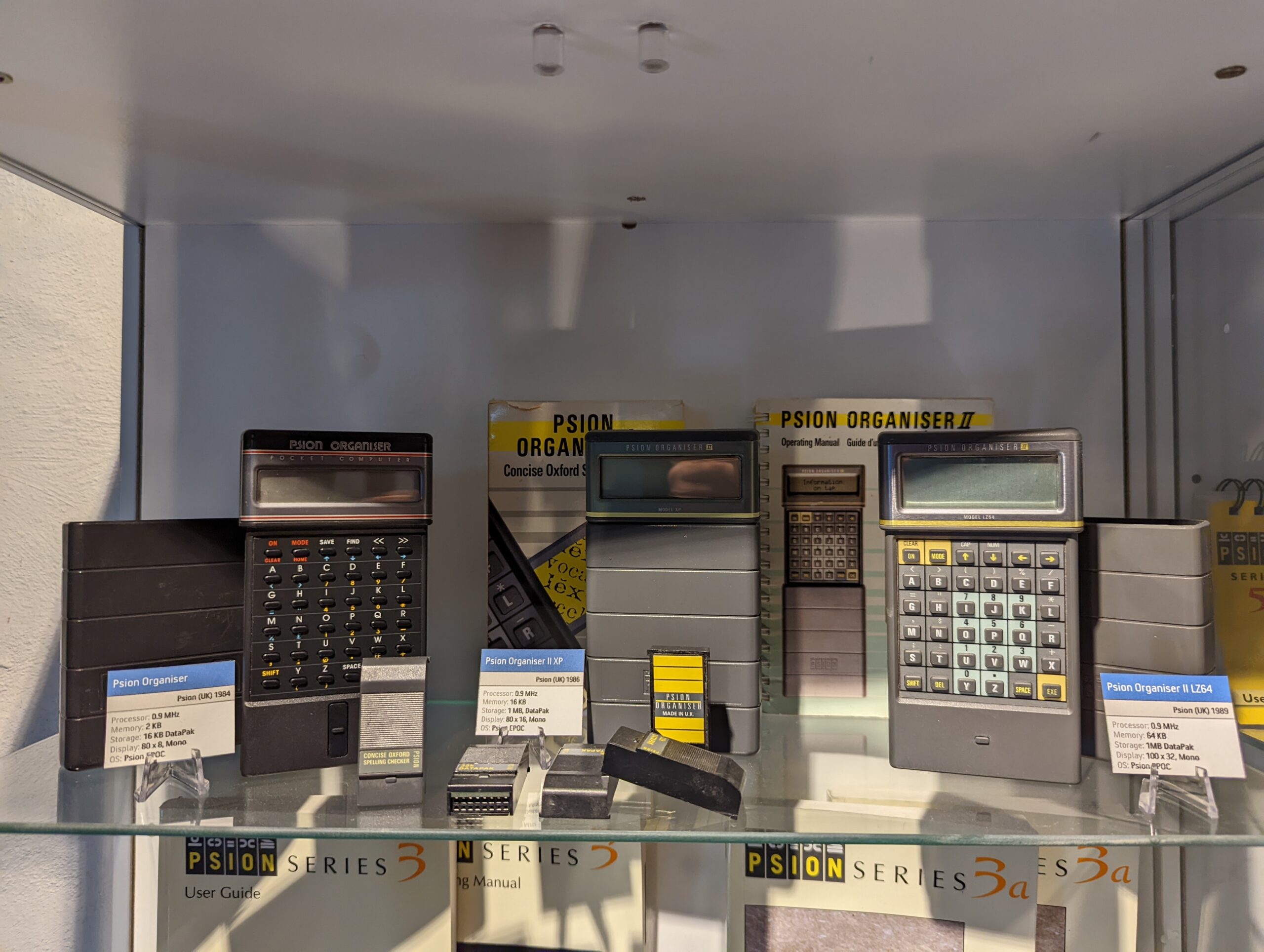
| Psion Organiser | Psion Organiser II XP | Psion Organizer II LZ64 |
| Psion (UK) 1984 | Psion (UK) 1986 | Psion (UK) 1989 |
| Processor: 0.9 MHz Memory: 2 KB Storage: 16 KB DataPak Display: 80 x 8, Mono OS: Psion EPOC |
Processor: 0.9 MHz Memory: 16 KB Storage: 1 MB, DataPak Display: 80 x 16, Mono OS: Psion EPOC |
Processor: 0.9 MHz Memory: 64 KB Storage: 1MB DataPak Display: 100 x 32, Mono OS: Psion EPOC |
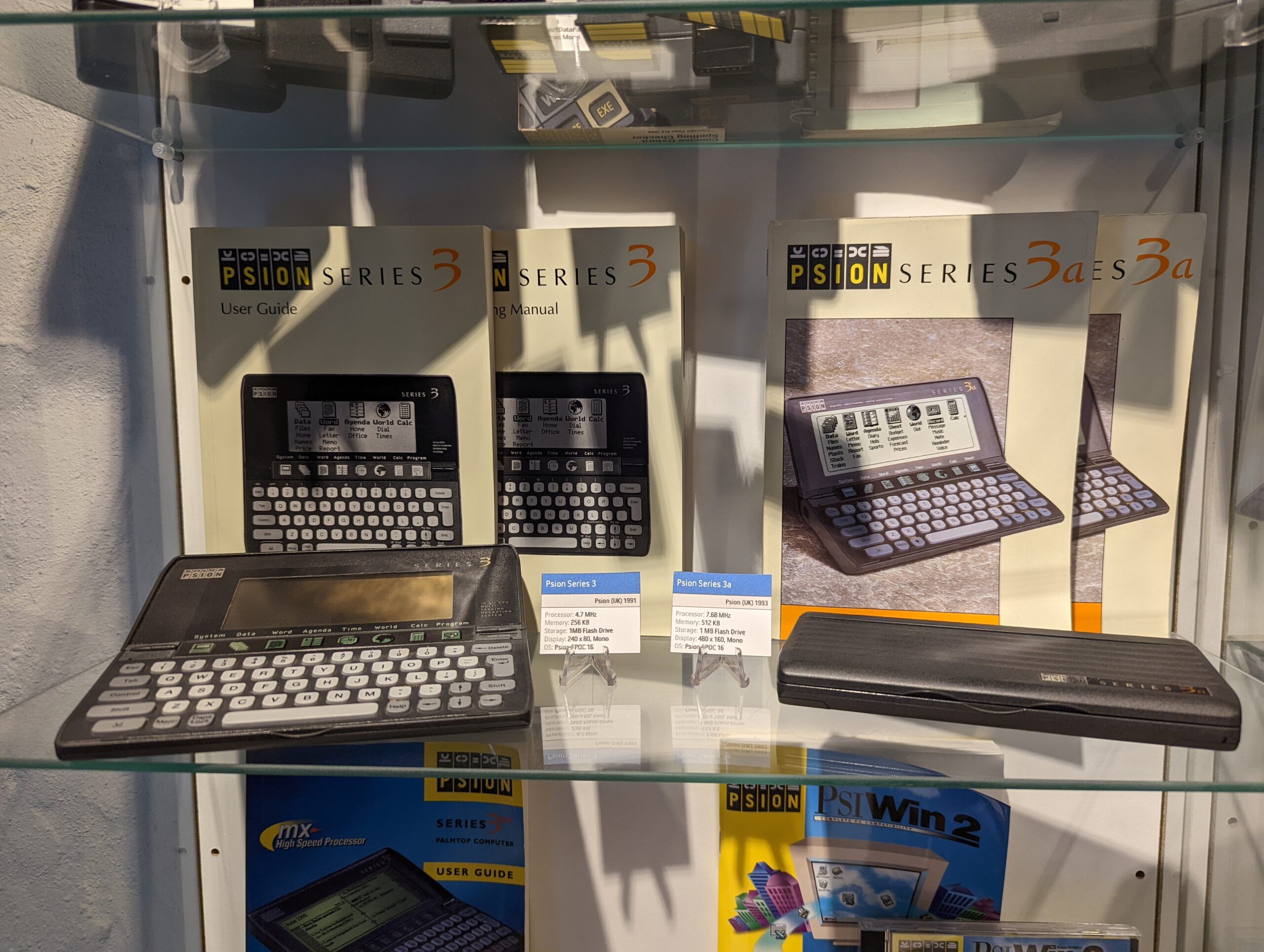
| Psion Series 3 | Psion Series 3a |
| Psion (UK) 1991 | Psion (UK) 1993 |
| Processor: 4.7 MHz Memory: 256 KB Storage: 1MB Flash Drive Display: 240 x 80, Mono OS: Psion EPOC 16 |
Processor: 7.68 MHz Memory: 512 KB Storage: 1 MB Flash Drive Display: 480 x 160, Mono OS: Psion EPOC 16 |
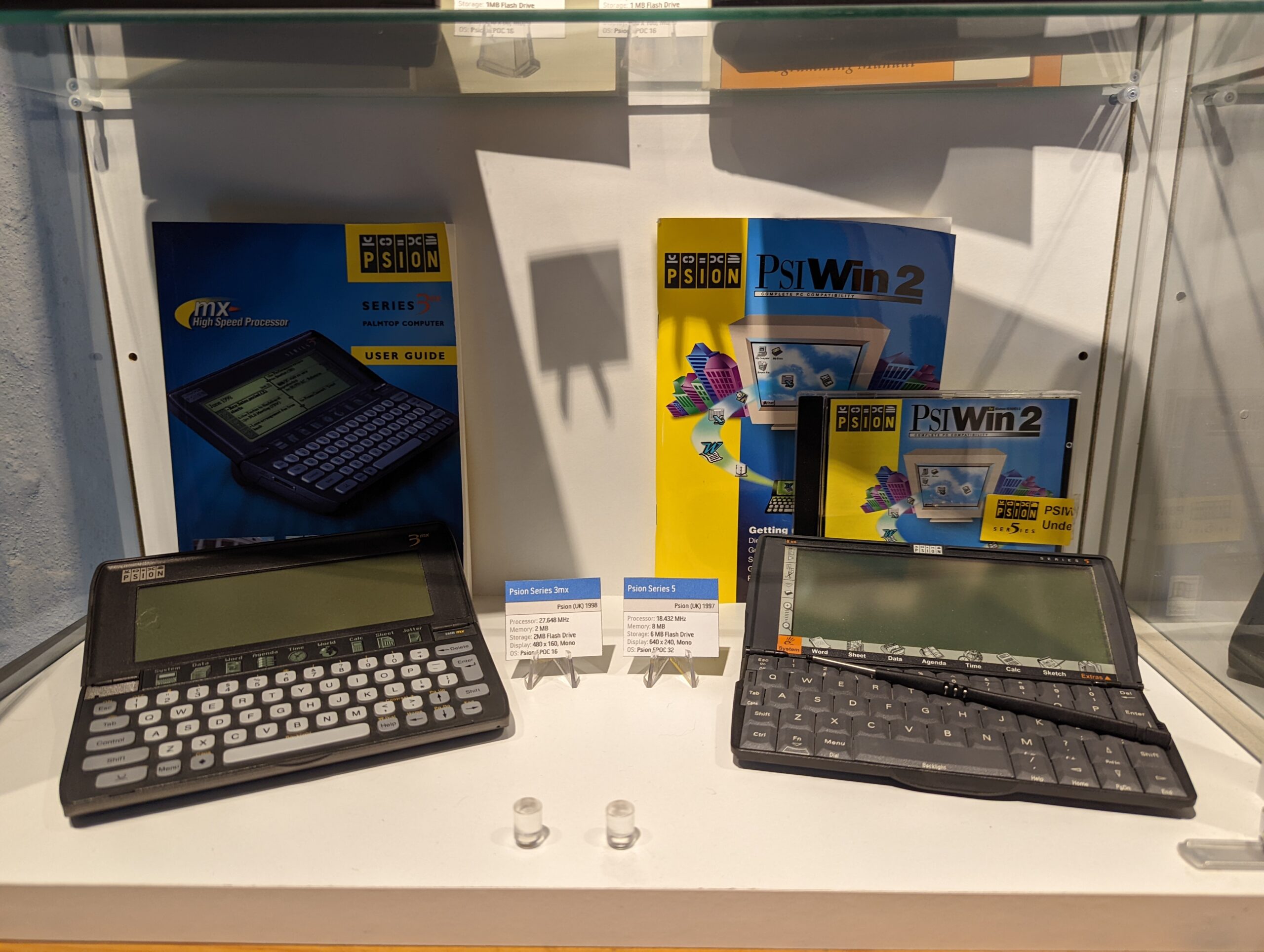
| Psion Series 3mx | Psion Series 5 |
| Psion (UK) 1998 | Psion (UK) 1997 |
| Processor: 27.648 MHz Memory: 2 MB Storage: 2MB Flash Drive Display: 480 x 160, Mono OS: Psion EPOC 16 |
Processor: 18.432 MHz Memory: 8 MB Storage: 6 MB Flash Drive Display: 640 x 240, Mono OS: Psion EPOC 32 |
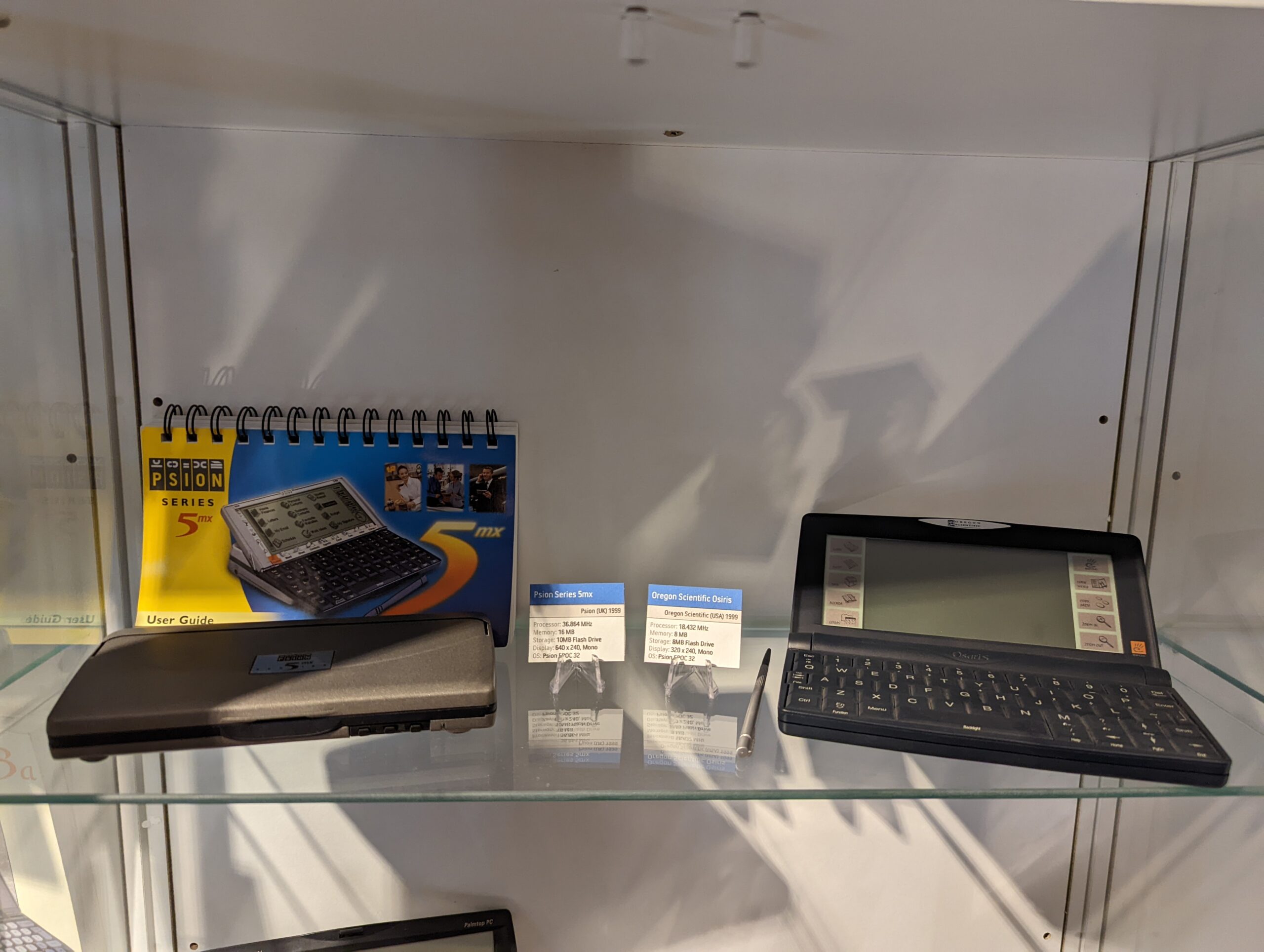
| Psion Series 5mx | Oregon Scientific Osiris |
| Psion (UK) 1999 | Oregon Scientific (USA) 1999 |
| Processor: 36.864 MHz Memory: 16 MB Storage: 10MB Flash Drive Display: 640 x 240, Mono OS: Psion EPOC 32 |
Processor: 18.432 MHz Memory: 8 MB Storage: 8MB Flash Drive Display: 320 x 240, Mono OS: Psion EPOC 32 |
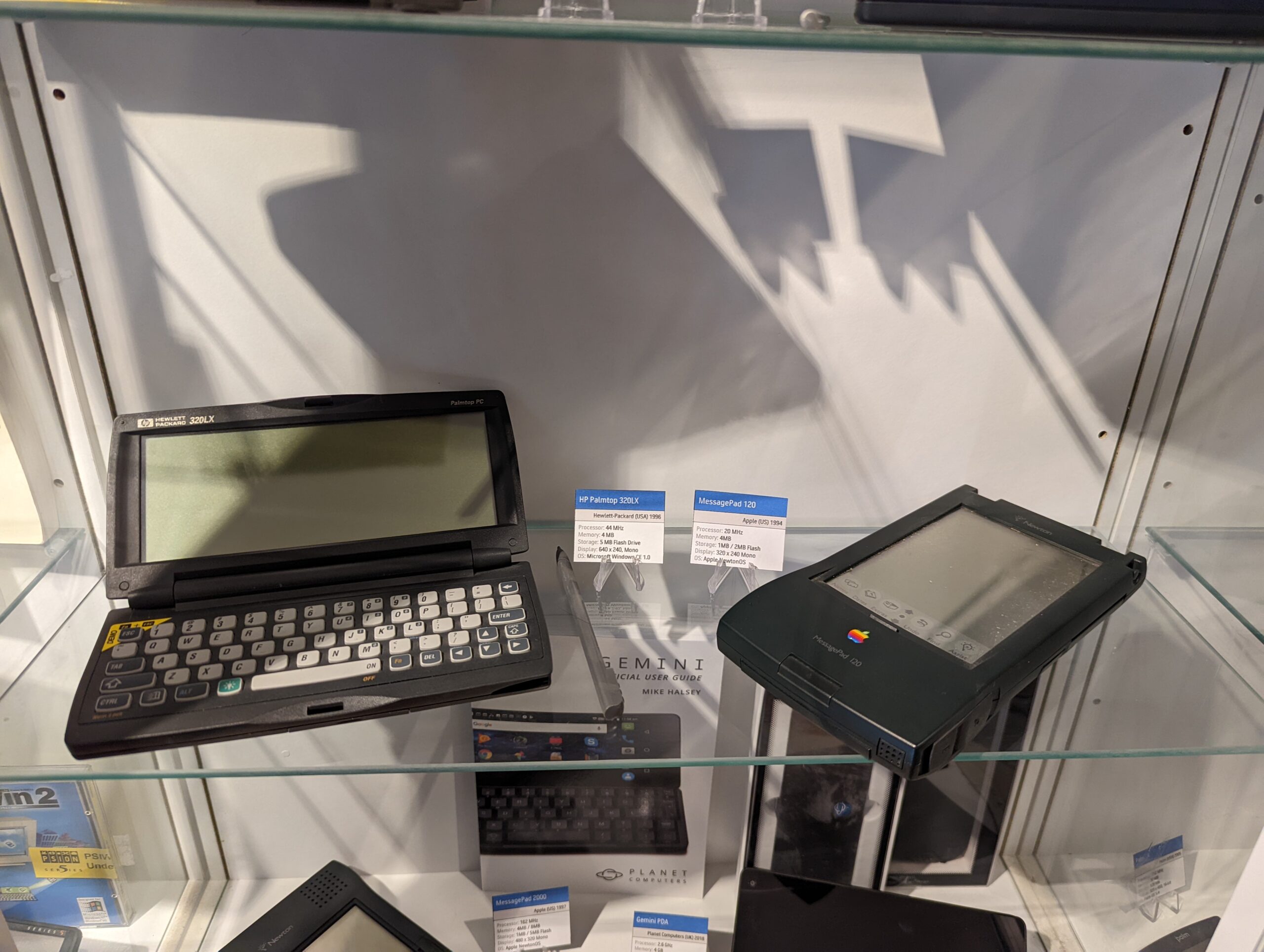
| HP Palmtop 320LX | Apple Newton MessagePad 120 |
| Hewlett-Packard (USA) 1996 | Apple (USA) 1994 |
| Processor: 44 MHz Memory: 4 MB Storage: 5 MB Flash Drive Display: 640 x 240, Mono OS: Microsoft Windows CE 1.0 |
Processor: 20 MHz Memory: 4 MB Storage: 1 MB / 2 MB Flash Drive Display: 320 x 240, Mono OS: Apple NewtonOS |
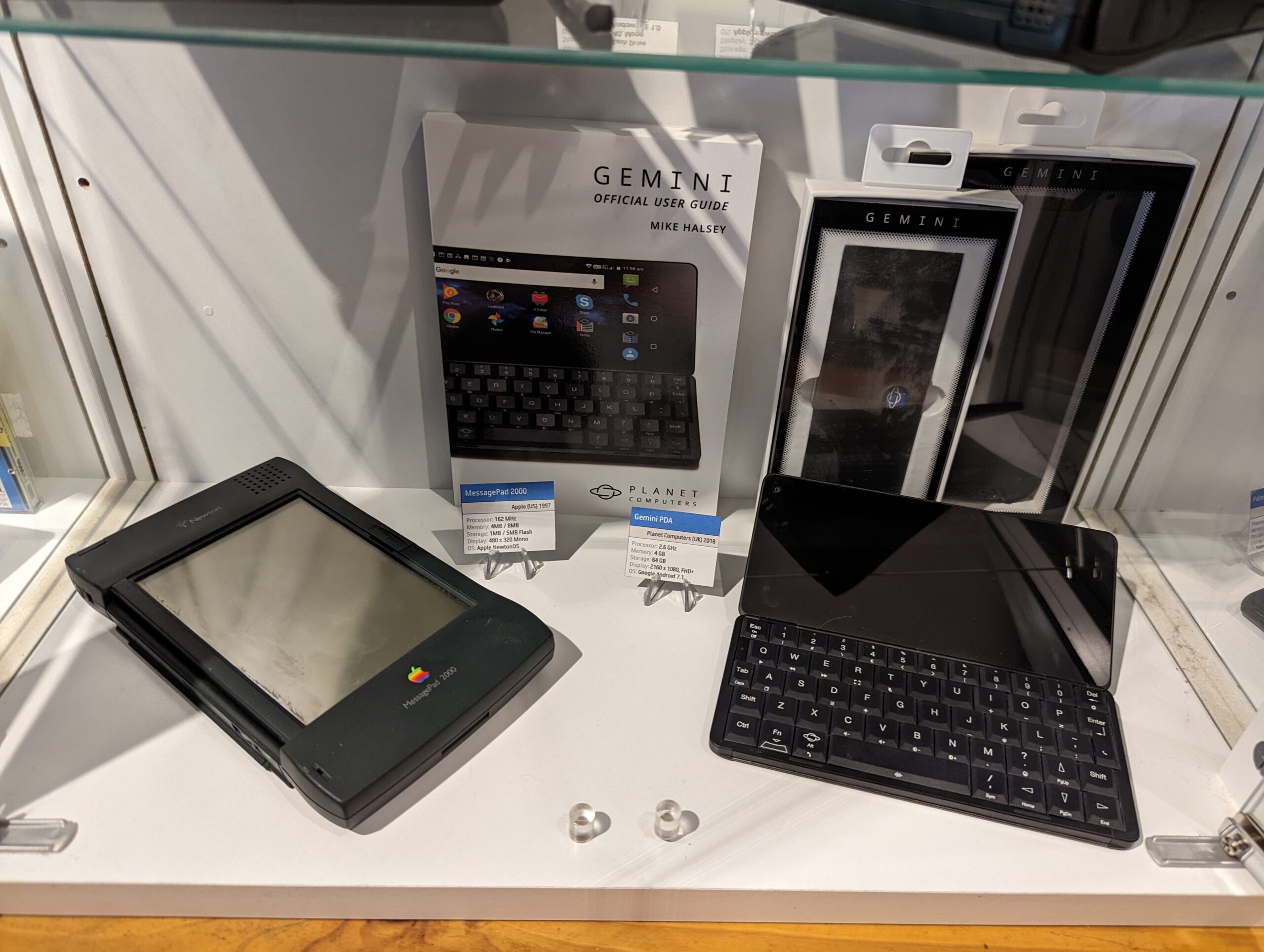
| Apple Newton MessagePad 2000 | Gemini PDA |
| Apple (USA) 1997 | Planet Computers (UK) 2018 |
| Processor: 162 MHz Memory: 4 MB / 8 MB Storage: 1 MB / 5 MB Flash Drive Display: 480 x 320, Mono OS: Apple NewtonOS |
Processor: 2.6 GHz Memory: 4 GB Storage: 64 GB Display: 2160 x 1080, FHD+ OS: Google Android 7.1 |
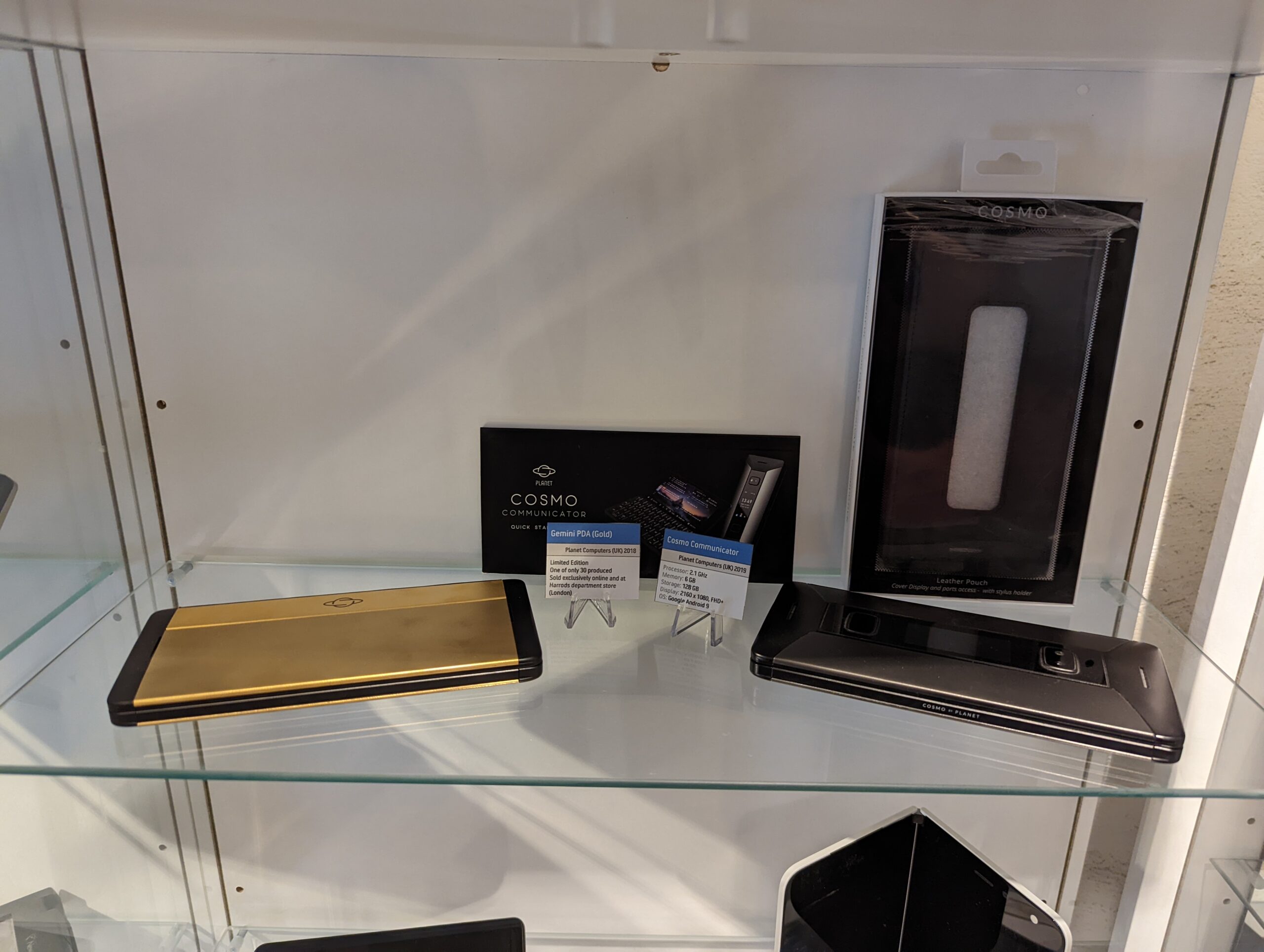
| Gemini PDA (Gold) | Cosmo Communicator |
| Planet Computers (UK) 2018 | Planet Computers (UK) 2019 |
| Limited Edition One of only 30 produced Sold exclusively online and at Harrods department store (London) |
Processor: 2.1 GHz Memory: 6 GB Storage: 128 GB Display: 2160 x 1080, FHD+ OS: Google Android 9 |
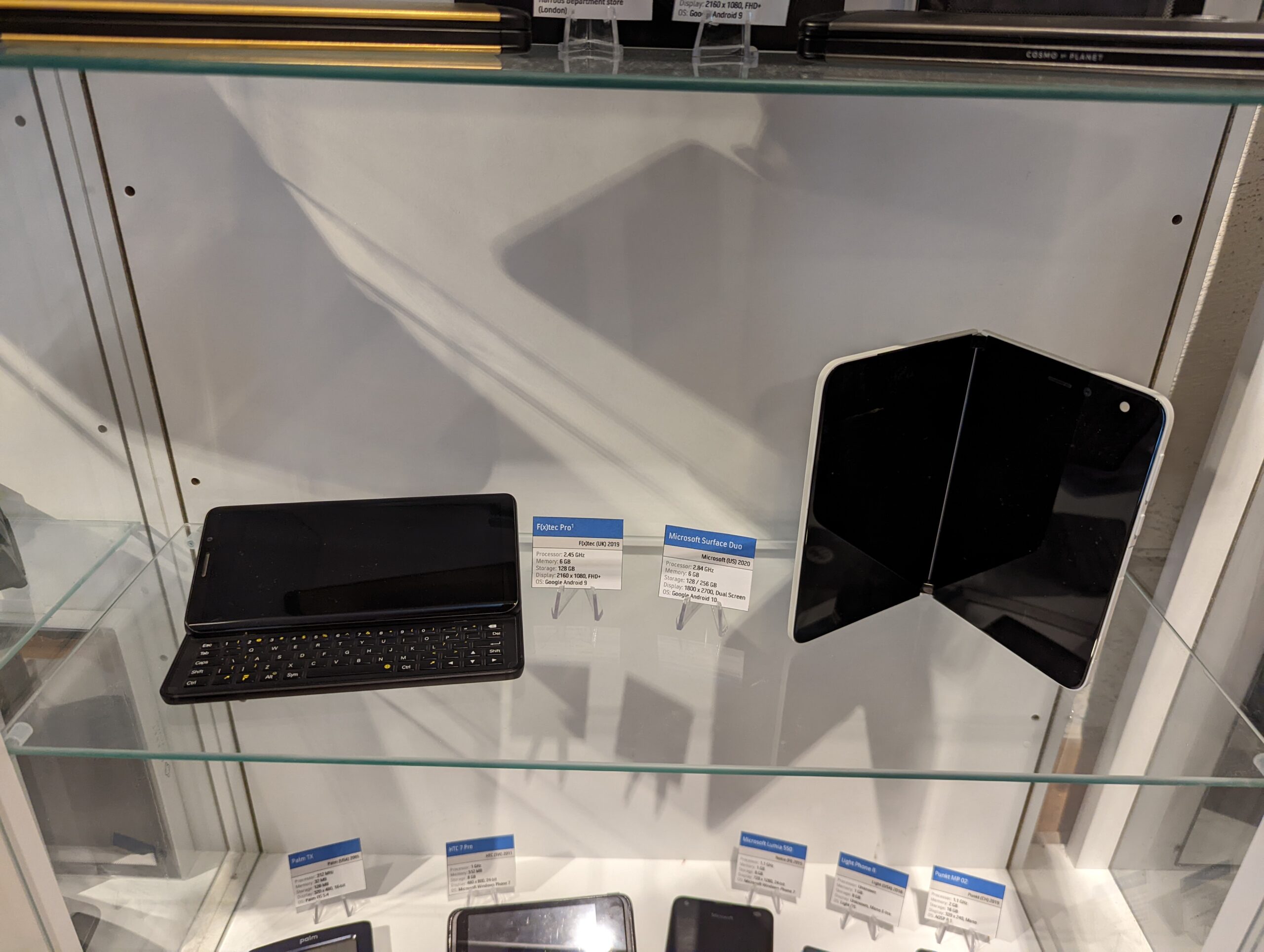
| F(x)tec Pro1 | Surface Duo |
| F(x)tec (UK) 2019 | Microsoft (USA) 2020 |
| Processor: 2.45 GHz Memory: 6 GB Storage: 128 GB Display: 2160 x 1080, FHD+ OS: Google Android 9 |
Processor: 2.84 GHz Memory: 6 GB Storage: 128 GB / 256 GB Display: 1800 x 2700, Dual Screen OS: Google Android 10 |
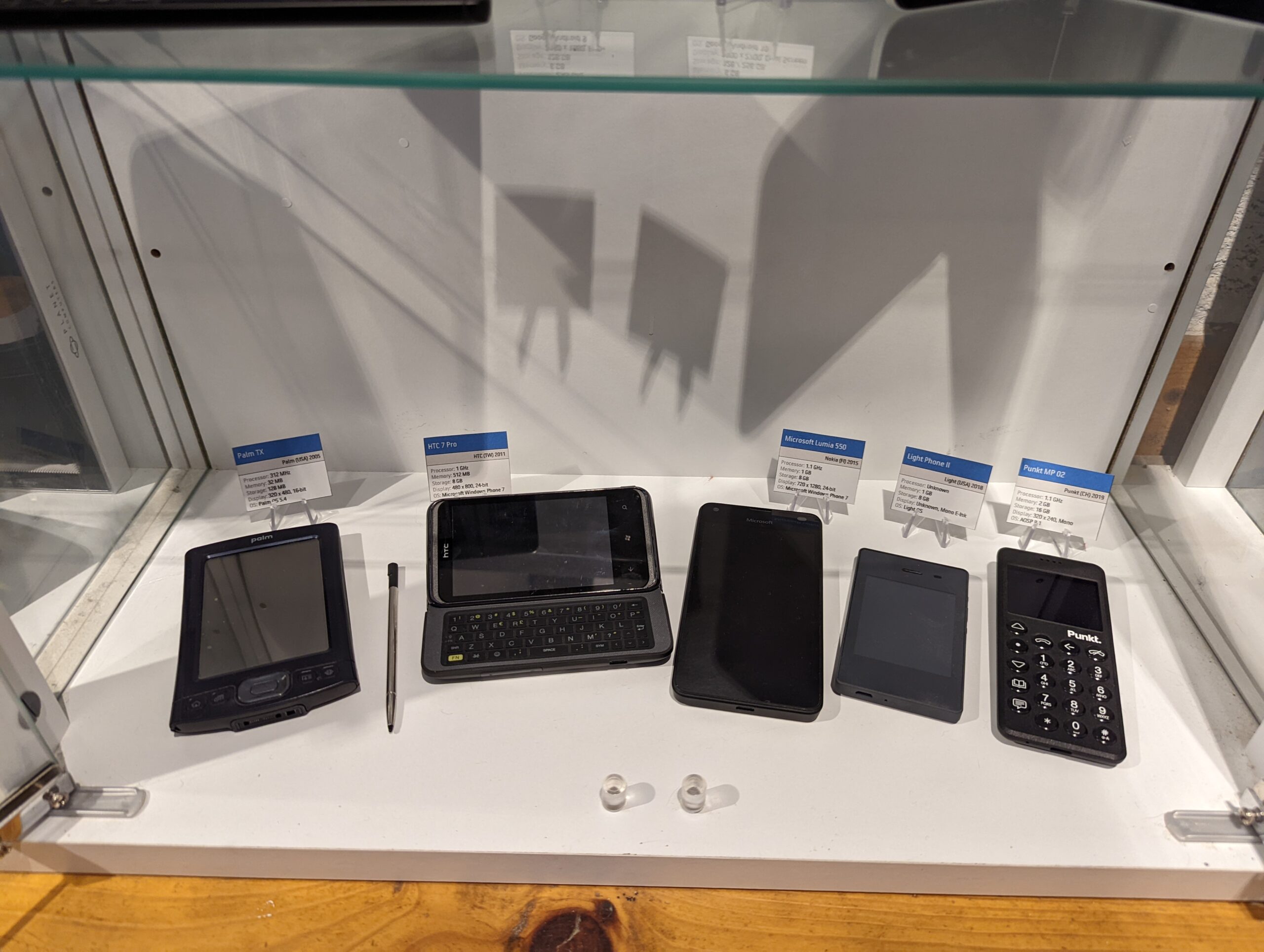
| Palm TX | Microsoft Lumia 550 | HTC 7 Pro | Light Phone II | Punkt MP 02 |
| Palm (USA) 2005 | Nokia (FI) 2015 | HTC (TW) 2011 | Light (USA) 2018 | Punkt (CH) 2019 |
| Processor: 312 MHz Memory: 32 MB Storage: 128 MB Display: 320 x 480, 16-bit OS: Palm OS 5.4 |
Processor: 1.1 GHz Memory: 1 GB Storage: 8 GB Display: 720 x 1280, 24-bit OS: Microsoft Windows Phone 7 |
Processor: 1 GHz Memory: 512 MB Storage: 8 GB Display: 480 x 800, 24-bit OS: Microsoft Windows Phone 7 |
Processor: Unknown Memory: 1 GB Storage: 8 GB Display: Unknown, Mono E-Ink OS: Light OS |
Processor: 1.1 GHz Memory: 2 GB Storage: 16 GB Display: 320 x 240, Mono OS: AOSP 8.1 |
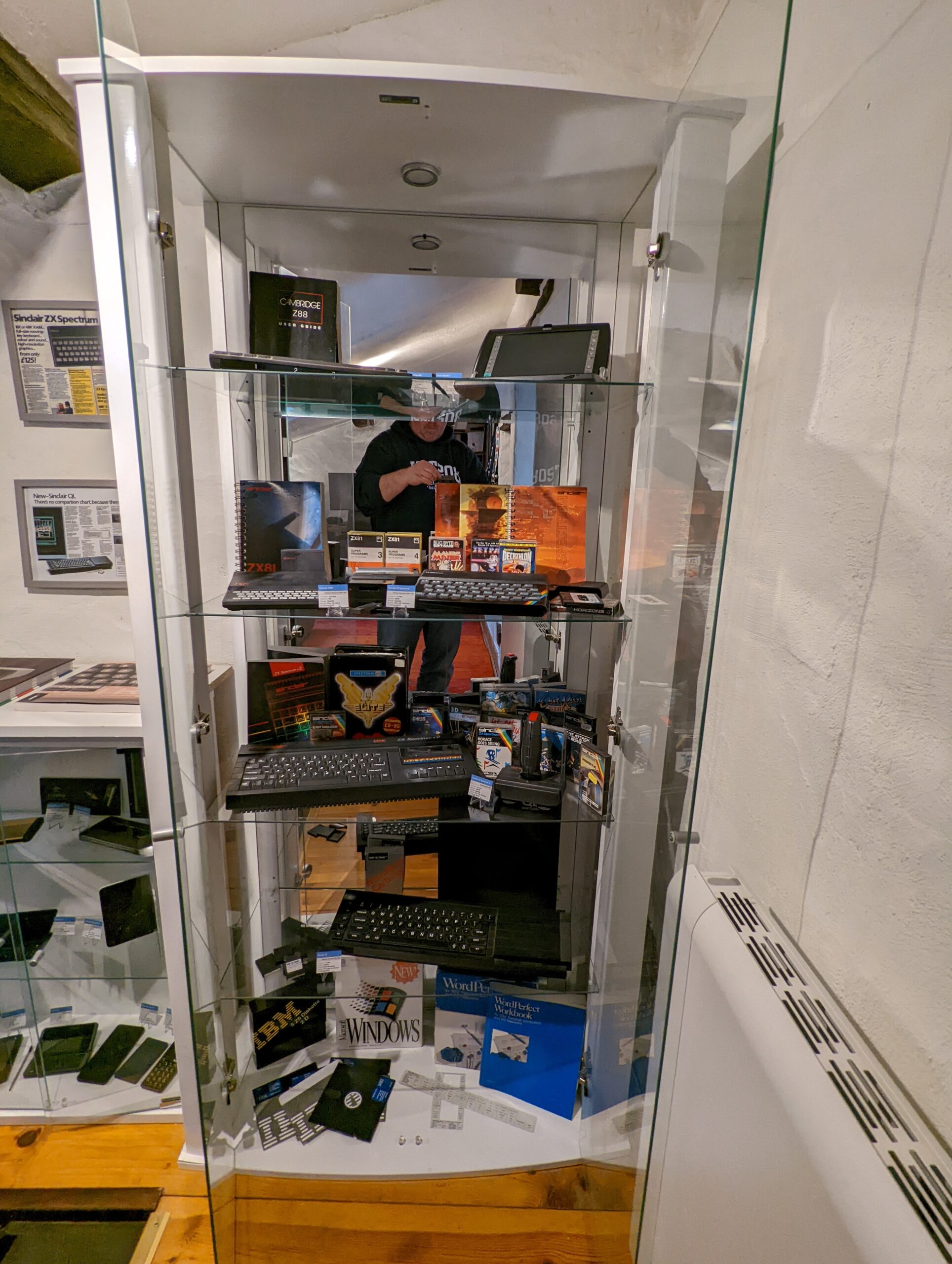
The next cabinet is for the home computers I loved and used so much in my youth. These are primarily British computers.
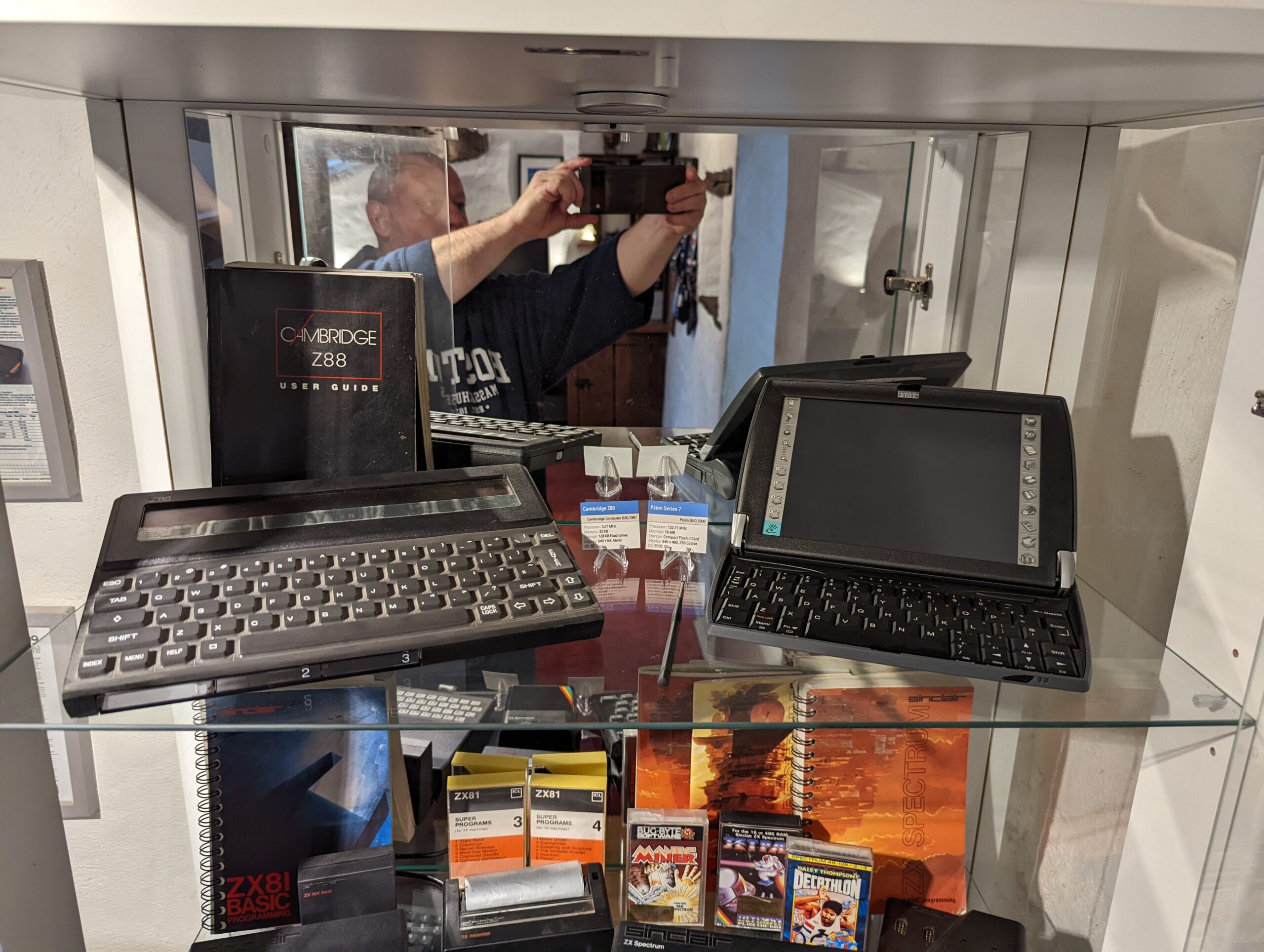
| Cambridge Z88 | Psion Series 7 |
| Cambridge Computer (UK) 1987 | Psion (UK) 2000 |
| Processor: 3.27 MHz Memory: 32 KB Storage: 128 KB Flash Drive Display: 640 x 64, Mono OS: OZ |
Processor: 132.71 MHz Memory: 16 MB Storage: Compact Flash II Card Display: 640 x 480, 256 Colour OS: EPOC 32 |
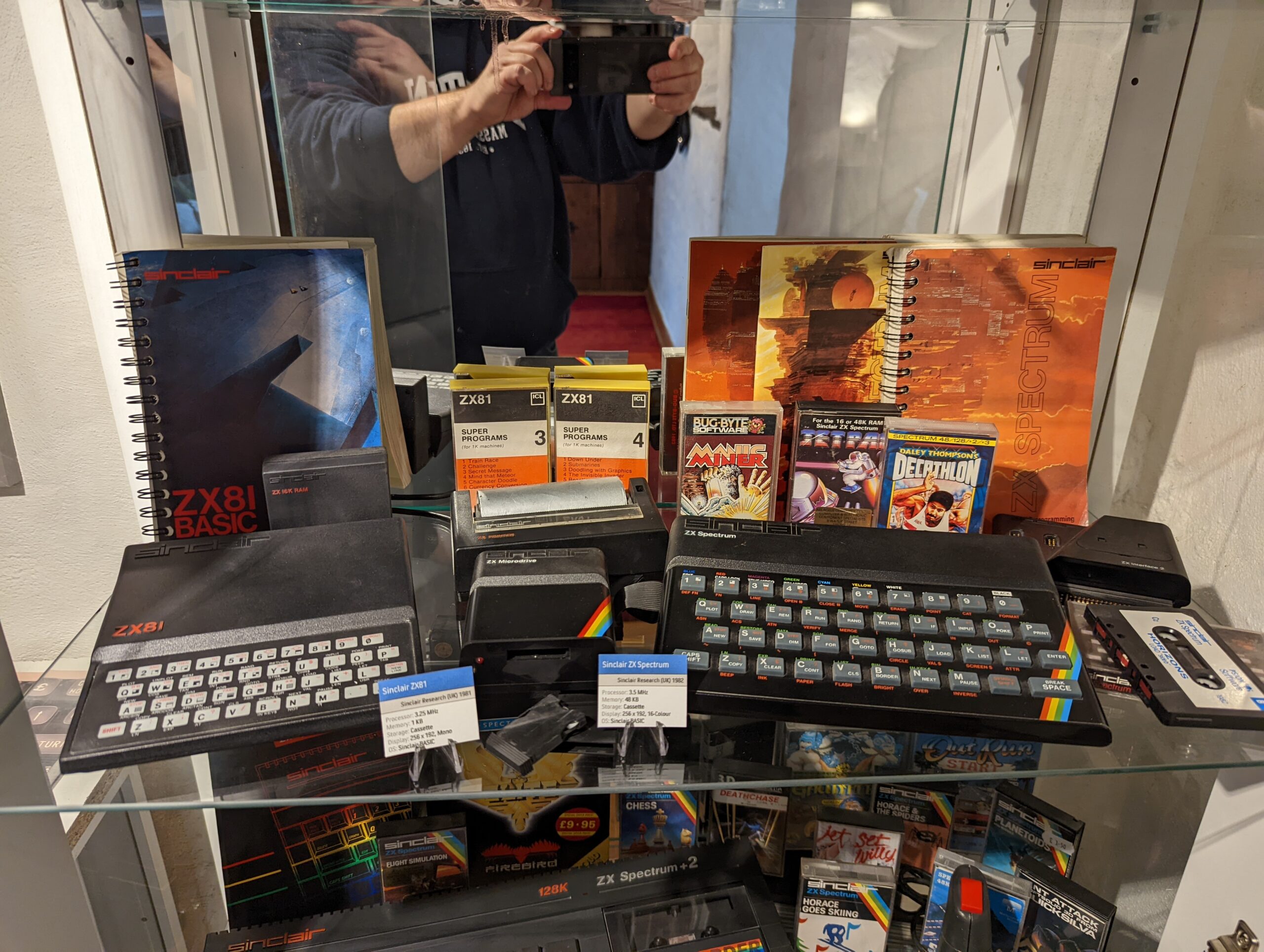
| Sinclair ZX81 | Sinclair ZX Spectrum |
| Sinclair Research (UK) 1981 | Sinclair Research (UK) 1982 |
| Processor: 3.25 MHz Memory: 1 KB Storage: Cassette Display: 256 x 192, Mono OS: Sinclair BASIC |
Processor: 3.5 MHz Memory: 48 KB Storage: Cassette Display: 256 x 192, 16-Colour OS: Sinclair BASIC |
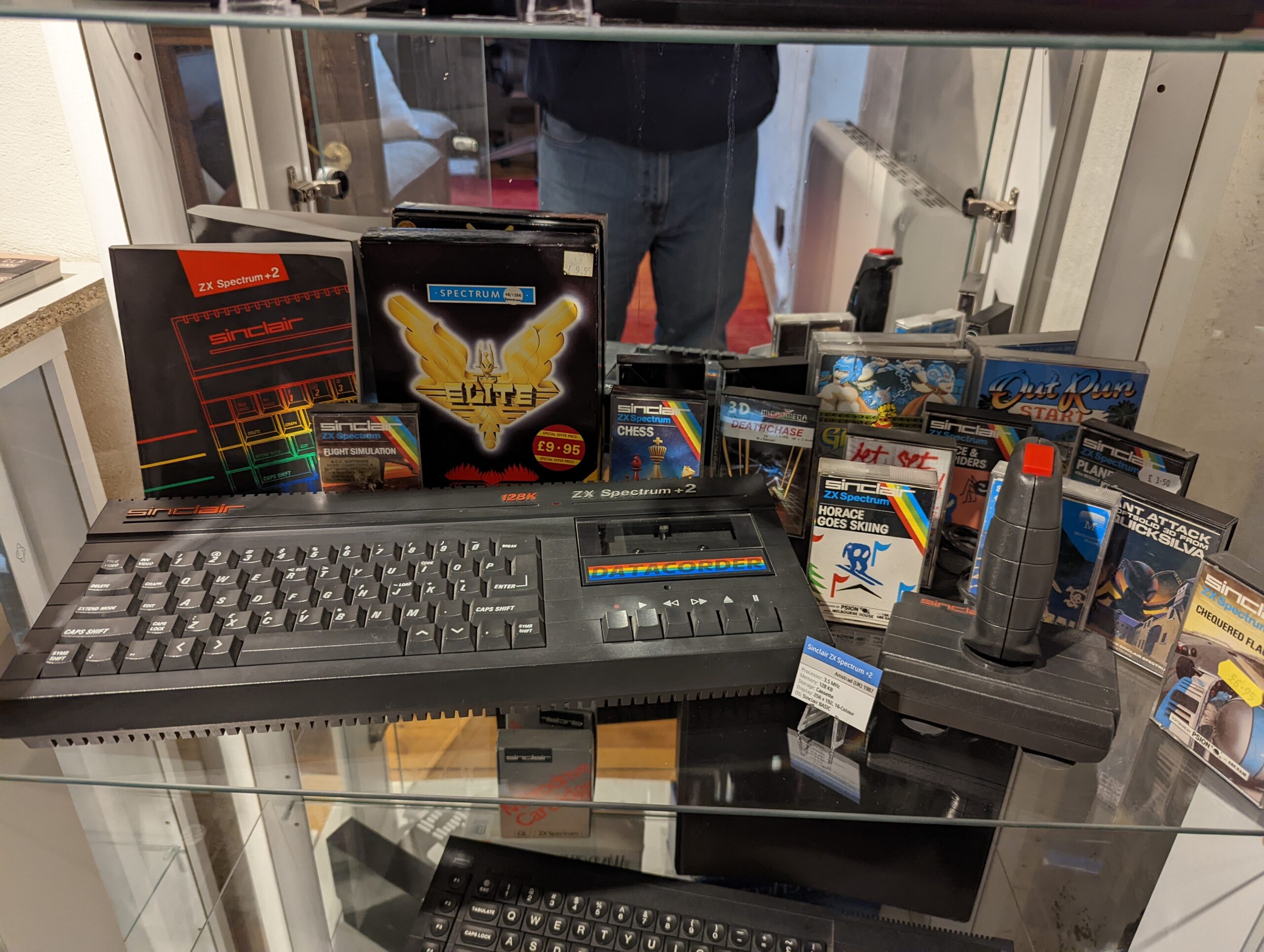
| Sinclair ZX Spectrum +2 |
| Amstrad (UK) 1987 |
| Processor: 3.5 MHz Memory: 128 KB Storage: Cassette Display: 256 x 192, 16-Colour OS: Sinclair BASIC |
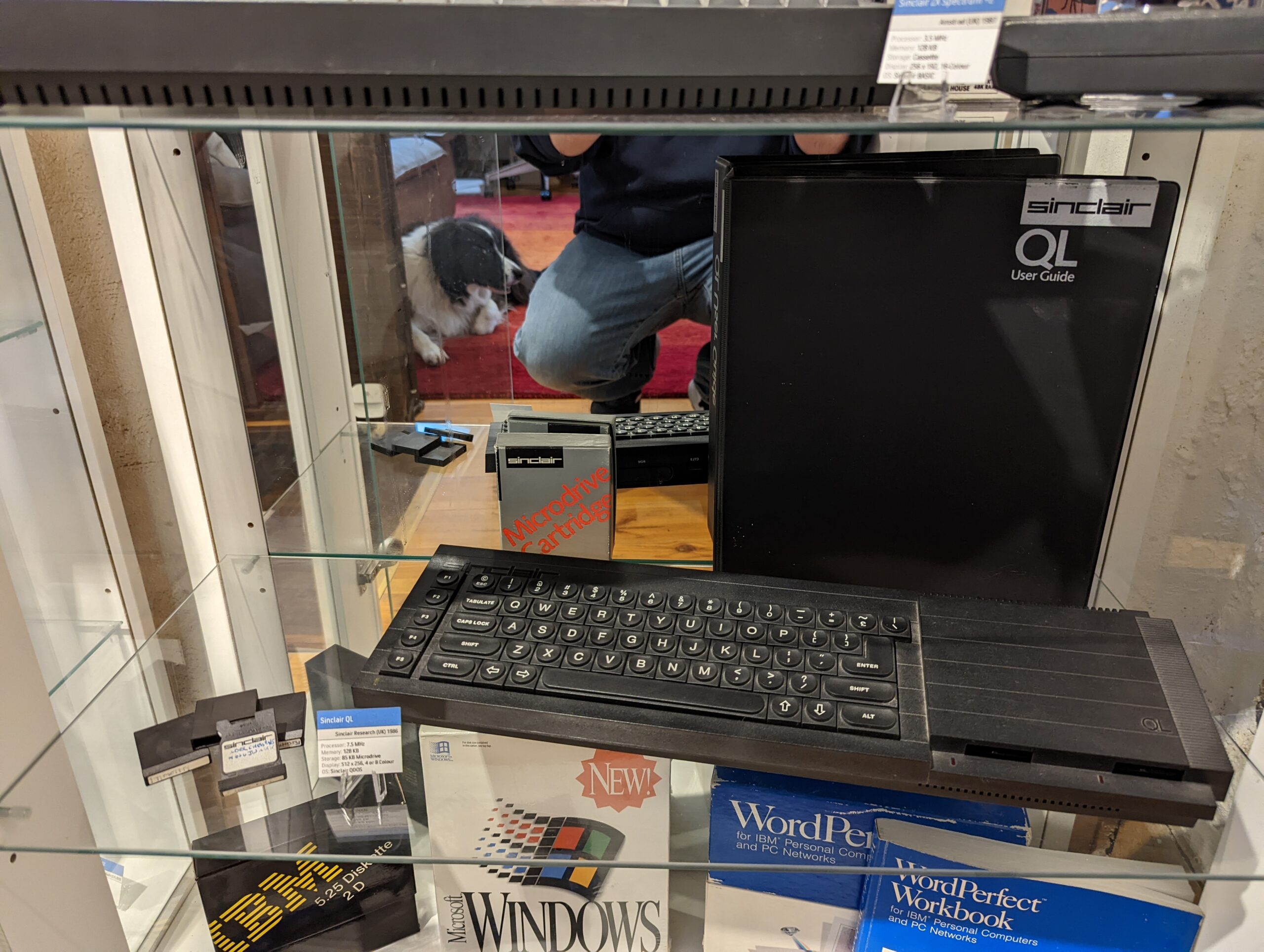
| Sinclair QL |
| Sinclair Research (UK) 1986 |
| Processor: 7.5 MHz Memory: 128 KB Storage: 85 KB Microdrive Display: 512 x 256, 4 or 8 Colour OS: Sinclair QDOS |
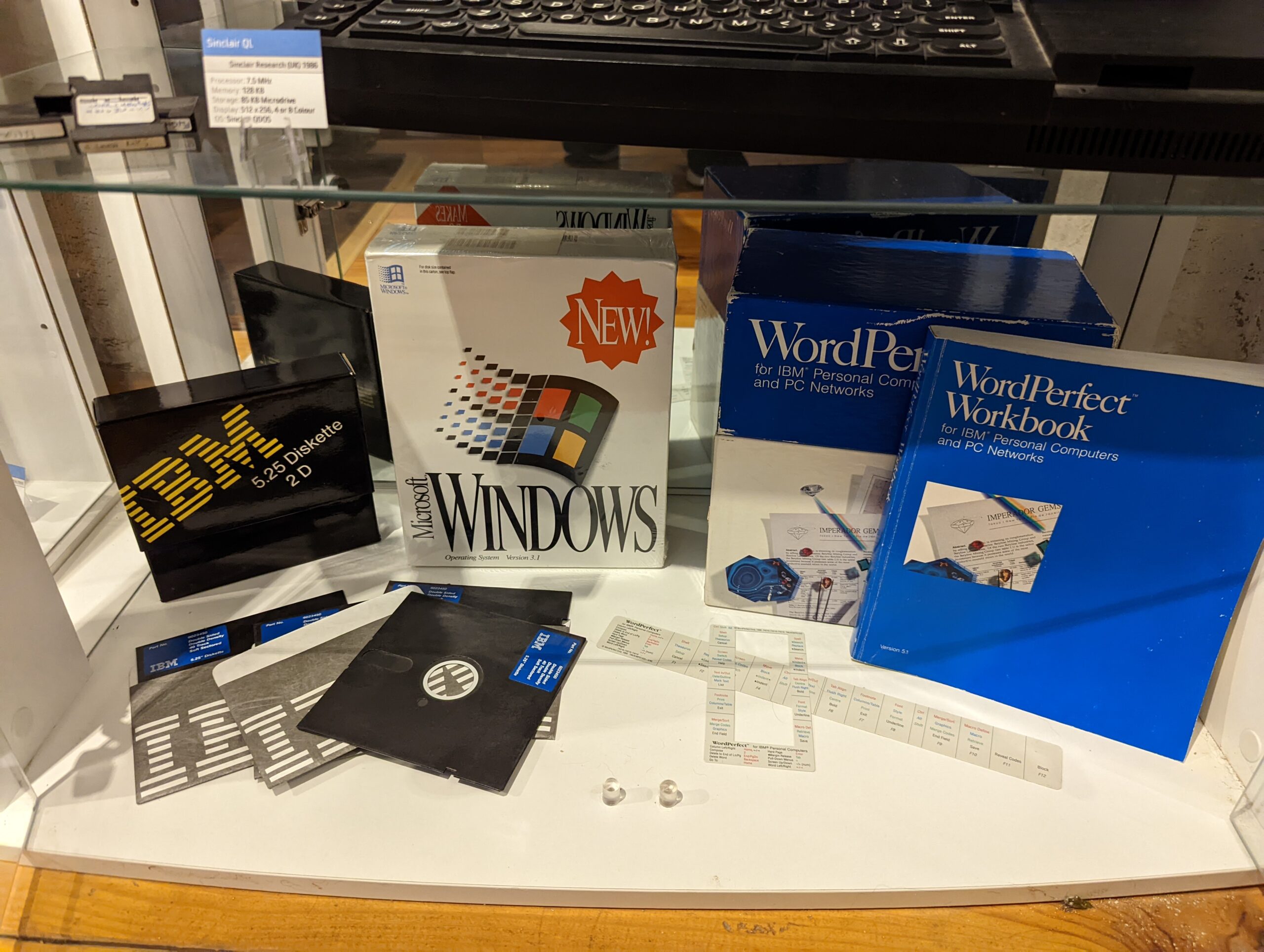
Left to right – 5¼-inch floppy disks, a shrink-wrapped copy of Windows 3.1, and the WordPerfect 5.1 word processor I enjoyed using so much in my youth.
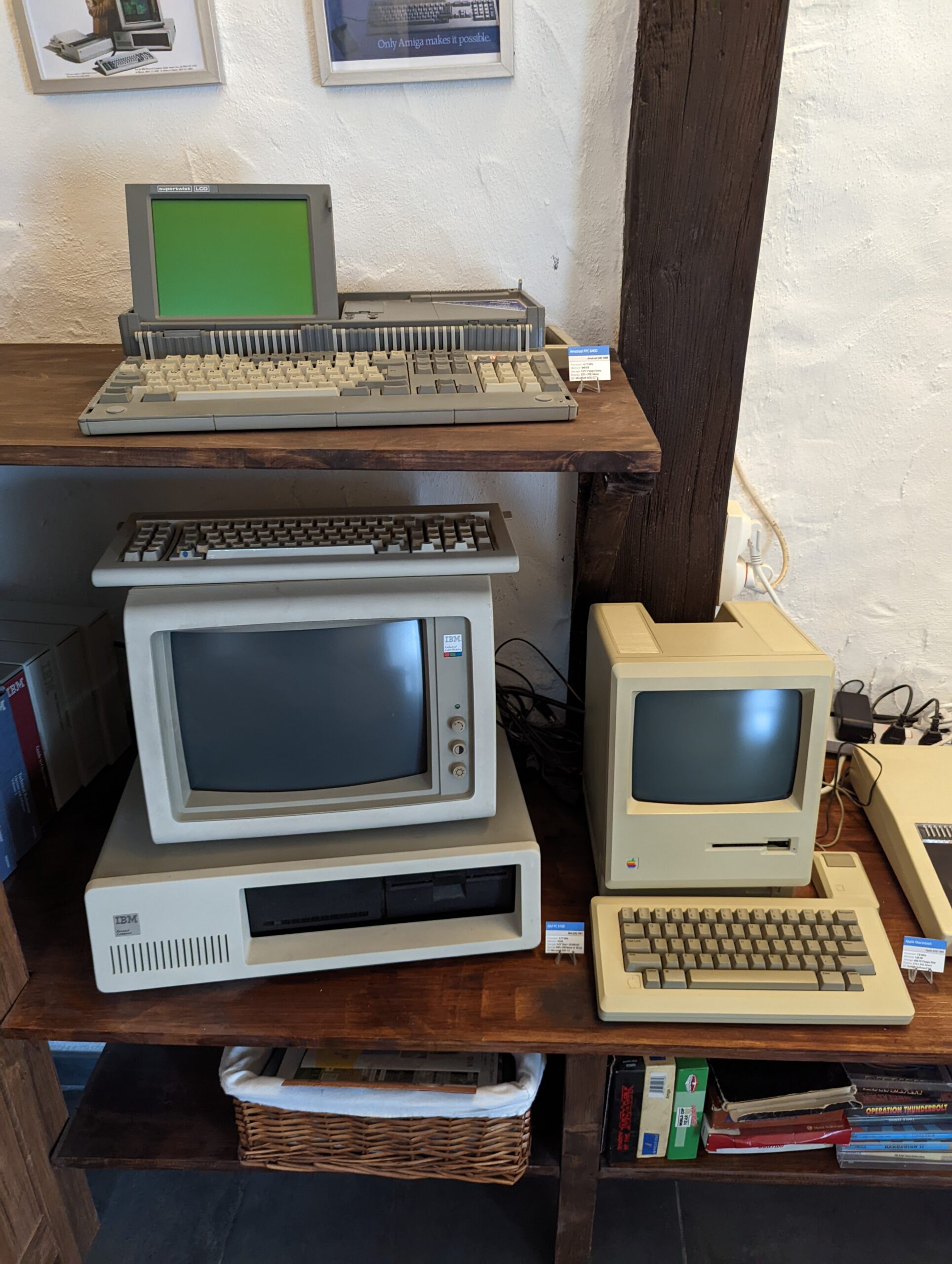
| Amstrad PPC 640D | IBM PC 5150 | Apple Macintosh |
| Amstrad (UK) 1988 | IBM (USA) 1981 | Apple (USA) 1984 |
| Processor: 4.77 MHz Memory: 640 KB Storage: 3.25” Floppy Disks Display: 320 x 200, Mono OS: Microsoft DOS 3.3 |
Processor: 4.77 MHz Memory: 16 KB Storage: 5.25” Disk + 20 MB HD Display: 640 x 200 16 Colour OS: Microsoft DOS 1.0 |
Processor: 7.8 MHz Memory: 128 KB Storage: 400 KB Floppy Disk Display: 512 x 342 Mono OS: System Software 1.0 |
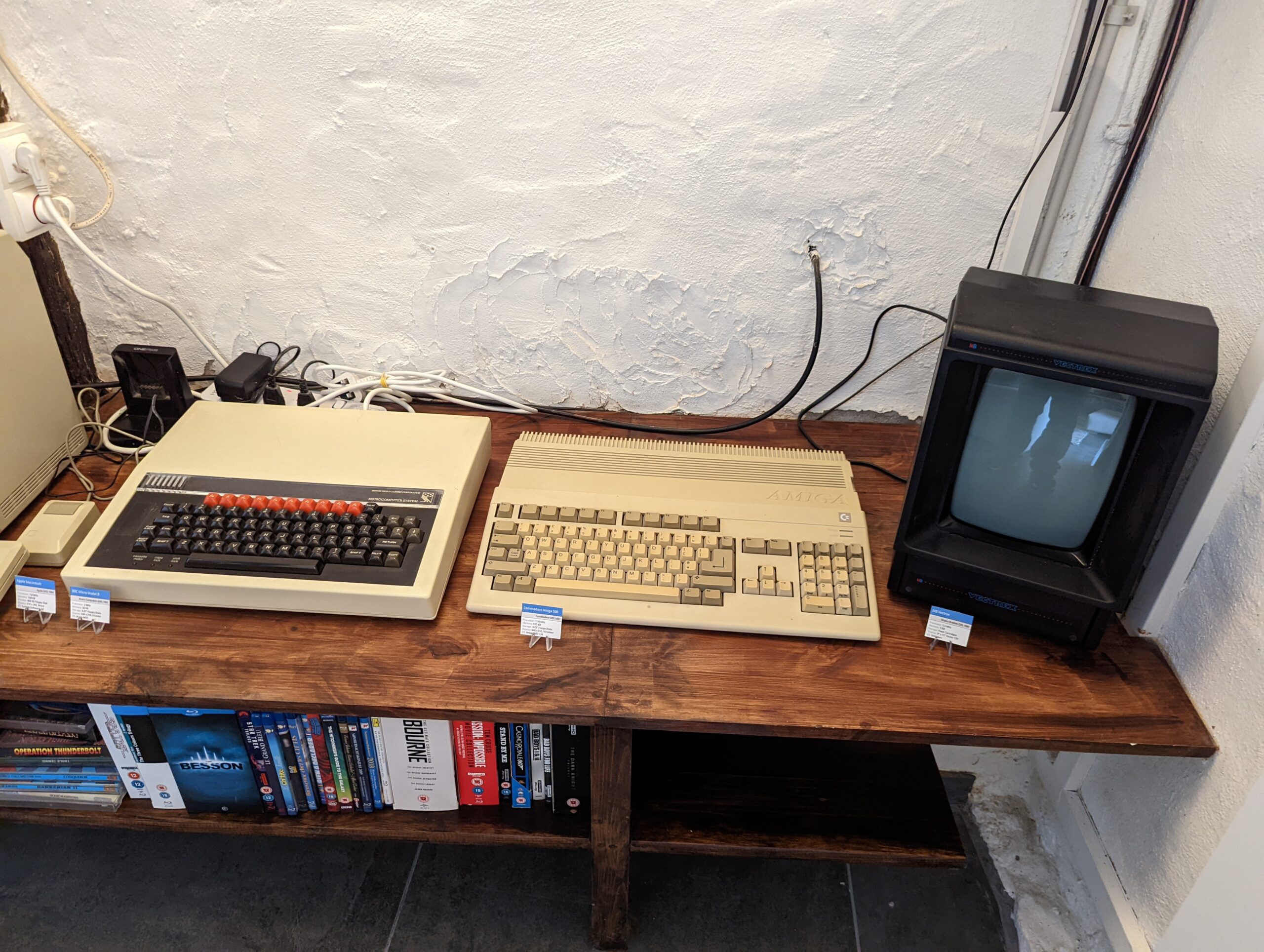
| BBC Micro Model B | Commodore Amiga 500 | MB Vectrex |
| Acorn Computers (UK) 1981 | Commodore (USA) 1987 | Milton Bradley (USA) 1982 |
| Processor: 2 MHz Memory: 32 KB Storage: 3.25” Floppy Disks Display: 640 x 256, 8 Colour OS: Acorn MOS |
Processor: 7.16 MHz Memory: 512 KB Storage: 3.25” Floppy Disks Display: 640 x 512, 16-Colour OS: AmigaDOS 1.34 |
Processor: 1.5 MHz Memory: 1 KB Storage: Flash Cartridges Display: 9” x 11” Vector CRT OS: Unknown |
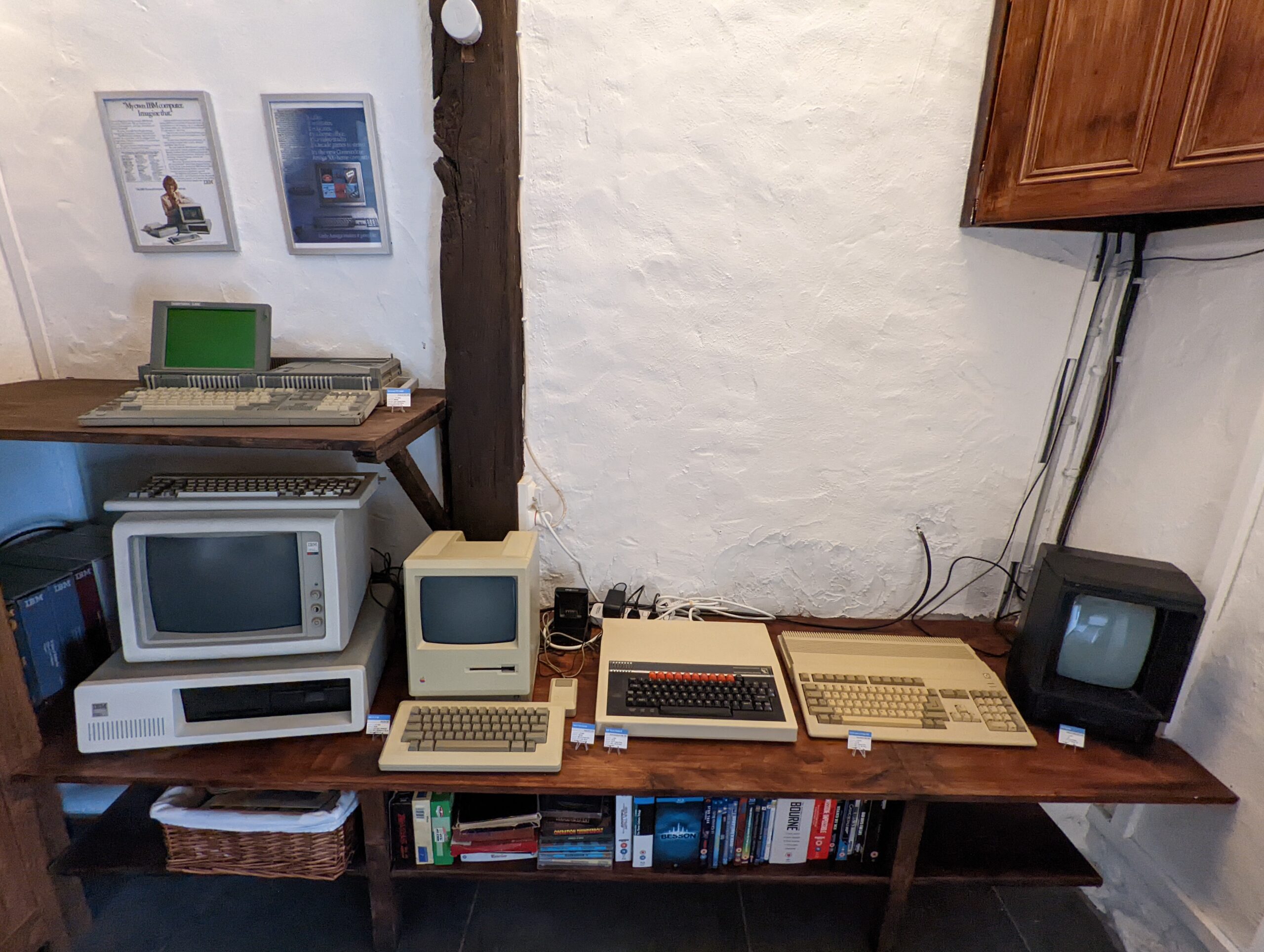
I will update this page as new items join my collection, and I’m expecting two new keyboard phones in the coming months.



Good job, I like it!
I keep my devices in a big box, may be will do something like your museum one time 🙂
This is a fantastic collection. Ooh, the ideas this is giving me… 🙂